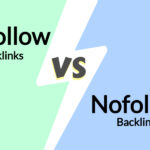What to Do When Your Search Ranking Drops

Experiencing a decline in your search ranking can be such a negative experience, primarily if your business relies heavily on organic traffic. However, it’s not the end of the world! With the right approach, you can diagnose the issue, implement corrective measures, and regain your lost rankings.
Here’s a step-by-step guide on what to do when your search ranking drops.
1. Analyze the drop
It’s important to investigate why your search rankings have decreased. Remember, this can have a big effect on how easily people can find your website, the amount of natural traffic you receive, and how well your site performs online.
Figuring out why your rankings have dropped will help you make changes to improve your position and get back on track. Furthermore, knowing what caused the decline will help you fine-tune your SEO plan and secure lasting success.
Here’s what you can do:
- Confirm the drop: Verify the drop using analytics tools like Google Search Console or Google Analytics. Compare data before and after the suspected drop to ascertain the change’s extent and pinpoint the keywords or pages most affected. This first evaluation will give you a clear picture and allow you to analyze further.
- Identify potential causes: Any negative outcome on your rankings would make you naturally curious about the possible causes. What could have gone wrong? The answer could be anything from Google algorithm updates to technical issues. At times, it can be a combination of several elements. What you must do is to study internal and external factors.
- Develop a recovery plan: Once you know the likely causes of the drop in rankings, you now need a comprehensive recovery plan. Start by fixing your website to make it more crawlable, indexable, and user-friendly. Also, optimize your on-page elements by improving content, title tags, meta descriptions, and internal linking structure to align with relevant keywords and user search intent.
Furthermore, it’s essential to create top-notch backlinks from established sites to boost your rankings and authority. Make sure to also monitor your rankings and traffic to measure your success and adjust your approach accordingly.
Ranking fluctuations happen now and then, so avoid panic and approach the situation systematically. If the cause of the drop remains unclear or recovery seems challenging, consider seeking guidance from an SEO agency in Sydney or similar firms in your location. While it’s easy to dwell on the negative, what can turn the situation around is focusing on building a sustainable long-term SEO strategy.
2. Fix technical issues
To fix technical issues that are causing a drop in rankings, follow these steps:
- Crawl your website: Use a crawler like Screaming Frog or DeepCrawl. Moreover, look for broken links, duplicate content, missing or incorrect meta tags, XML sitemap errors, and slow page speed.
- Check your robots.txt File: Ensure your robots.txt file isn’t blocking search engines from crawling essential pages or sections of your website.
- Fix broken links: Utilize a tool to detect any broken links, then take action by either deleting them or redirecting them to appropriate pages.
- Optimize page speed: A slow page speed can result in more people leaving your site quickly and lower search engine rankings. To improve this, compress images, minimize CSS and JavaScript files, utilize browser caching, and implement content delivery network or CDN.
- Improve mobile-friendliness: Use responsive design, optimize images for mobile, and test your website on different devices.
- Fix indexing issues: Ensure your website is properly indexed by search engines. Get your XML sitemap to Google Search Console and Bing Webmaster Tools. Then, use these tools to look for crawl errors and fix them immediately.
- Check for manual actions: If your website has received a manual action from Google, it will be mentioned in Google Search Console. Address the issue causing the manual action and submit a reconsideration request.
- Review structured data: Implement structured data or Schema markup to make your content understandable to search engines. Use a tool like Google’s Structured Data Testing Tool to validate your implementation.
By following these steps, you can address technical issues on your website and improve your chances of regaining lost rankings. Also, dedicate time and resources to consistently monitoring and maintaining your website for optimal technical health.
3. Update and improve content
Another critical area for improvement lies within your website’s content. You can start the process by conducting a content audit to pinpoint weaknesses, identify outdated information, and uncover any gaps in content compared to your competitors.
You can use SEO tools like Google Analytics, Ahrefs, or SEMrush to analyze traffic patterns and pinpoint which keywords have lost traction. This will help you focus your improvements on the most impactful sections.
Next, enhance your content by incorporating the latest data, adding new insights, and ensuring it comprehensively answers the search intent. Integrate relevant keywords naturally throughout the text, too, and consider adding multimedia elements like images, videos, and infographics to increase engagement and dwell time. Updating meta tags and headers and improving internal linking can also boost your content’s SEO performance.
Finally, promote your updated content through various channels such as social media, email newsletters, and backlinks from reputable sites. Engage with your audience and welcome their feedback to provide fresh engagement signals to search engines, too,
By consistently monitoring the performance and making iterative improvements based on analytics, you can maintain and improve your content’s ranking over time.
4. Rebuild your backlink profile
Rebuilding a backlink profile requires a strategic approach focusing on quality over quantity. Here’s a comprehensive guide on how to achieve this:
- Assess your current backlink profile: Identify and disavow low-quality or toxic links that could harm your site’s reputation.
- Create high-quality content: Create educational, exciting material that naturally draws inbound links from other sites.
- Outreach and promotion: Actively reach out to, share, and collaborate with relevant websites, blogs, and influencers in your industry.
- Broken link building: This strategy provides value to both parties, as it helps them fix a broken link while earning you a valuable backlink.
- Unlinked brand mentions: This is a simple and effective way to acquire backlinks from sites already mentioning you.
- Guest posting: This strategy helps you reach a wider audience and earn backlinks from high-authority domains.
- Participate in online communities: Engage in relevant online forums, discussion boards, and social media groups. Then, share your expertise, answer questions, and provide valuable insights. Feel free to add a link to your website in your profile or signature; just make sure not to come across as too pushy.
- Earn editorial links: Create newsworthy content or participate in events that attract media attention. Then, pitch your stories to journalists and bloggers to earn natural editorial backlinks. This strategy can significantly boost your site’s visibility and credibility.
But remember, rebuilding a backlink profile takes time and effort. Focus on building relationships, creating valuable content, and promoting it strategically. By consistently implementing these tactics, you can earn high-quality backlinks to improve your website’s authority, visibility, and organic search rankings.
5. Observe your competitors
Watch your rivals closely to comprehend their methods and spot areas for growth. Tools like Ahrefs and SEMrush can provide valuable insights into your competitors’ backlinks, content, and overall SEO strategy.
6. Stay updated with SEO best practices
SEO continuously changes, so keeping up with the latest techniques is essential. Stay on top by following trusted SEO blogs, joining webinars, and engaging in SEO forums.

What could cause a decline in rankings?
A sudden drop in search rankings can be attributed to various internal and external factors that affect your website. Some of the most common causes include:
- Algorithm updates: Google often updates its algorithms to enhance search results. These updates can significantly impact rankings, especially if your website needs to be aligned with the latest best practices or relies on outdated SEO tactics.
- Technical issues: Issues with your website, such as broken links, server errors, slow page speed, or incorrect robots.txt directives, can prevent search engine crawlers from reaching and indexing your pages, which can decrease your rankings.
- On-page issues: If not done strategically, changes to your website’s content, title tags, meta descriptions, internal linking structure, or keyword targeting can negatively affect your rankings. Over-optimization or keyword stuffing can also trigger penalties from search engines.
- Off-page issues: If the number or quality of backlinks leading to your site decreases, it could be detrimental to your domain authority and rankings. Additionally, negative SEO attacks, such as the creation of spammy backlinks or the spread of misinformation about your site, can also cause your rankings to plummet.
- Manual actions: If your website violates search engine guidelines, such as engaging in black-hat SEO practices or having low-quality content, it may be subjected to a manual action by search engine reviewers, resulting in a significant drop in rankings.
- Competitor activity: Increased competition in your niche can also lead to a drop in rankings. If your competitors consistently produce high-quality content, build strong backlinks, and optimize their websites, they may outrank you in search results.
- Other factors: Consider other factors such as changes in user behavior, fluctuations in search trends, or updates to the search engine results page (SERP) layout.
It’s essential to investigate each of these potential causes to identify the root of the problem and develop an effective recovery plan. Analyzing website analytics, reviewing recent changes to your site, monitoring backlink profiles, and staying informed about algorithm updates are crucial steps in diagnosing and addressing the issue.
Conclusion
A drop in search ranking can be challenging, but staying calm and methodical in your approach is essential. You can recover and improve your search rankings by analyzing the drop, identifying potential causes, fixing technical issues, updating content, rebuilding your backlink profile, monitoring competitors, and staying updated with SEO best practices. Remember, SEO is a long-term game, and persistence is vital to success.








Mind-blowing!
Thanks for the Valuable information on how to deal with search rankings.